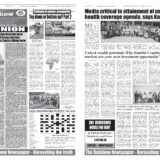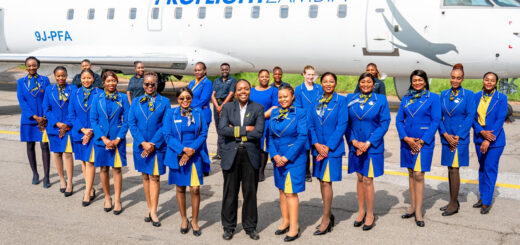BBC ON THIS DAY | 25 | 1964: President Kaunda takes power
Notice: Undefined index: catFilterList in /home/zambi/public_html/wp-content/plugins/wp-likes/api.php on line 243
http://news.bbc.co.uk/onthisday/hi/dates/stories/october/25/newsid_2658000/2658325.stm
Zambia : History
History
Archaeological findings at Kabwe indicate that Zambia was inhabited around 10,000 BCE. More complete records date from the arrival of the Luba and Lunda peoples during the 14th to 15th century, from what are now the Democratic Republic of Congo and Angola. The Bemba are descendants of the Luba and the Lozi of the Lunda. The Ngoni peoples came north from South Africa to eastern Zambia. David Livingstone, the British missionary and explorer, travelled through Zambia in the mid-19th century. He was followed by British settlers in the 1880s and 1890s. Arab slave-trading flourished in the territory throughout the 19th century, until it was ended by the British in 1893.
In 1889, the British South Africa Company received a Royal Charter to explore, develop and administer the territory. In 1924 the company ceded administrative control of Zambia, called Northern Rhodesia, to the British Crown and serious exploitation of the country’s main resource, copper, began. The capital moved from Livingstone to Lusaka in 1935. The Federation of Northern and Southern Rhodesia and Nyasaland, with its own constitution, existed from 1953 to 1963.
In the mid-1950s Kenneth Kaunda founded the Zambia African National Congress (ZANC), a breakaway from the more conservative African National Congress (ANC), to fight for civil and voting rights for the African population. ZANC was quickly banned by the colonial authorities, and Kaunda arrested. During his internment, his followers evaded the ban by remoulding the ZANC as the United National Independence Party (UNIP), taking the name from the main platform of its programme. Kaunda became chairman of the UNIP on his release in 1960. In turn, the UNIP was outlawed but it had caught the popular imagination and political demonstrations spread across the country. The UK accepted the demands and, in January 1964, introduced a new constitution giving the country internal self- government, and organising elections. UNIP emerged as the majority party and proceeded towards independence; the Republic of Zambia became independent and a member of the Commonwealth on 24 October 1964.
United National Independence Party
Within a decade of independence, economic conditions worsened. Demand for copper was already beginning to fall and there was tumult in Southern Africa. Landlocked Zambia was badly affected by all the major conflicts of the period. The closure of the border with Zimbabwe, then Rhodesia (under the sanctions programme aimed at Ian Smith’s illegal regime), disrupted exports. Civil war broke out in Angola and, in 1975, the Benguela railway was closed. Mozambique’s long battle against the Renamo dissidents began shortly after its independence in 1975; rail and oil lines were targets for attack. Sanctions against South Africa also affected Zambia’s trade and transport. Refugees from these troubled countries and Namibia (engaged in the independence war with South Africa) were given sanctuary in Zambia.
The UNIP government of Kenneth Kaunda created a one-party state (lasting from 1973 until 1991) in an unsuccessful attempt to strengthen national unity. A coup plot in 1980 involved local business leaders and the Governor of the Bank of Zambia. Several trade union leaders, including Frederick Chiluba, were detained during a wave of strikes in 1981, unions now having become the main focus of opposition to UNIP. Popular discontent was fuelled by the effects of IMF-backed recovery programmes. From 1986, demonstrations (sometimes violent) against food price increases began to take a more political form, leading to demands for a more democratic system of government.
Restoration of multiparty democracy
In July 1990, the 17-year ban on organised opposition groups was lifted. Three days later, the Movement for Multiparty Democracy (MMD) was founded. The elections in October 1991 gave a substantial majority to the MMD and its presidential candidate, Frederick Chiluba. However, continuing discontent with economic conditions and the effects of severe drought led to a new wave of strikes within a year. A breakaway group of nine MMD MPs formed the National Party in August 1993.
In March 1994 the government appointed a commission to rewrite the constitution and a draft new constitution was submitted to the President in June 1995, the commission recommending that it should be approved by a national referendum. The government argued that it should instead be adopted by the National Assembly before the elections that were due in November 1996. The Assembly did so in June 1996, despite international criticism and the suspension of some aid. Among controversial government amendments to the constitution were clauses that specified that a President could serve a maximum of two five-year terms, thus disallowing the candidacy of Kenneth Kaunda, former President for 27 years and presidential candidate of the opposition UNIP. UNIP also objected to clauses debarring any person from candidacy whose parents are not or were not Zambian citizens (Kaunda’s parents came from Malawi).
Most of the opposition parties boycotted the November 1996 elections (UNIP because its leader was debarred under the new constitution). There was a landslide victory for the MMD. But because of the boycott, many leading opposition parties did not have any seats in the National Assembly. Turnout was 56 per cent of those registered to vote, although it is estimated that only 50 per cent of those eligible were registered. The MMD won 131 of the 150 Assembly seats, and Chiluba won 73 per cent of the presidential vote. The largest opposition party was then the National Party, with five seats.























